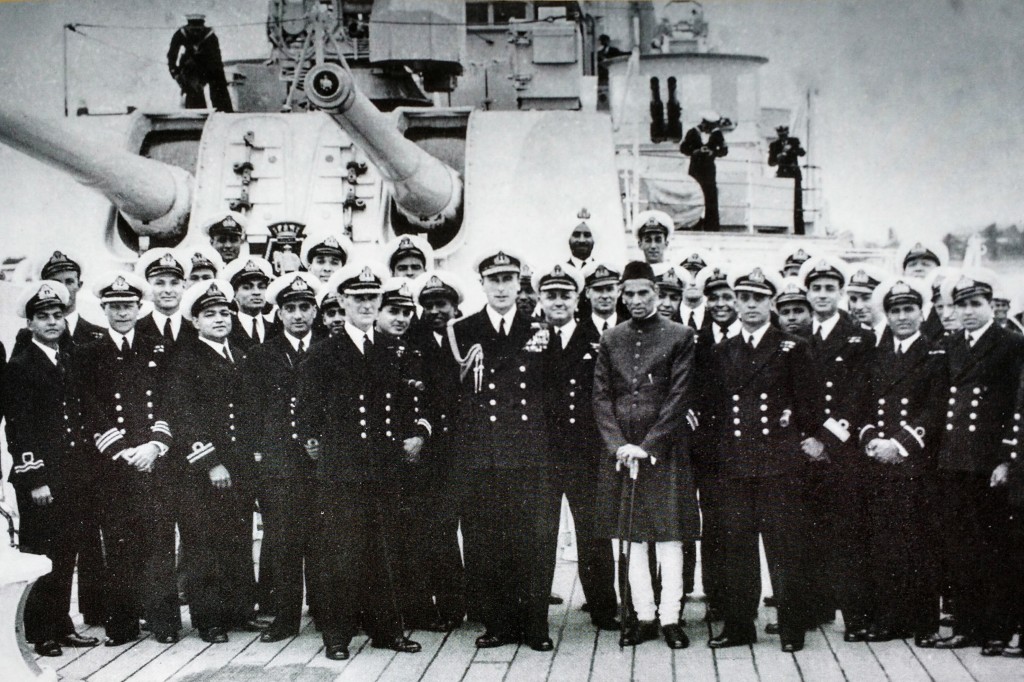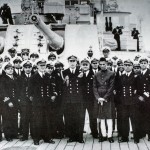Every year, the countdown to Indian Independence Day sees a spate of media features on the political milestones to freedom (like the Quit India movement of 8 August 1942) and the horrors of Partition, which resulted in thousands of Hindu, Muslim and Sikh families being splintered, massacred and displaced while crossing the border between the two countries.
One story that is overlooked is the partition of the erstwhile Royal Indian Navy (headquartered in Bombay from 1686 to 1944) into the navies of India and Pakistan, and the impact that the formation of these two navies had on the fluid geo-political situation post-1947 in the Arabian Sea and the Bay of Bengal
For a depleted and truncated, post-independence Indian Navy it meant patrolling two vast seas — the Arabian Sea, as it was contiguous to West Pakistan (today’s Pakistan) and the west coast of India, and the Bay of Bengal to erstwhile East Pakistan (today’s Bangladesh) and the east coast of India and its archipelago of islands of Andaman and Nicobar.
To contextualise this, it is important to recount the period just prior to the formation of these two navies, the happenings on Independence Day, and more importantly the years of infancy (1947-65), when the Indian Navy made a conscious shift from British acquisitions to Russian defence platforms (ships, submarines), technology and training protocols.

The inevitability of Partition & its challenges
Mahatma Gandhi and Lord Louis Mountbatten, last viceroy of India, tried till the very last to bring freedom to a united India rather than a partitioned subcontinent, but by June of 1947, it was inevitable that two separate countries would get independence from British rule– Pakistan on 14 August and India on 15 August.
In a report dated 26 June 1947 in The Times of India, to facilitate the division of assets of the British Indian army, navy and air force between the two countries, an Armed Services Reconstitution Committee with a sub-committee for each service was established.
The two navies’ early commanding officers had been groomed in the traditions of the British Royal Navy, but armed services personnel, like all British Indian citizens, could choose the country to which they wanted to go. This created a particularly piquant situation for the future Indian Navy, as most gunners and gunnery ratings were Muslim, who opted to go to Pakistan, while the Pakistan Navy faced a dearth of signalmen, who were mostly South Indian.
This skewed ‘skills’ demographics almost delayed the commissioning of India’s first post-independence acquisition, the Leander class cruiser INS Delhi (former HMS Achilles), which was undergoing a refit in Chatham (England).
Recalls Lt. Cdr. V.A. Kamath (later Vice Admiral), “Partition came in August 1947, and the only gunner I had with me at Whale Island (UK), Sharif Khan, and all the Muslim ratings who opted for Pakistan, were returned to Karachi. Unfortunately, those who opted for Pakistan formed the bulk of the gunnery ratings and we had to wait a few months before fresh batches of ratings who had opted for India were sent to England to start (training) all over again…”[1]
The two navies, upon their formation on 14 and 15 August, continued with the prefix ‘royal’ as both countries, till the adoption of their respective constitutions, were dominions under the British Commonwealth. Hence, in India’s case, there was no change in name for the RIN. Additionally, to ensure a smooth transition for both navies, they were headed, till the mid-1950s, by British commanding officers – the first to head the independent RIN was Rear Admiral J.T.S. Hall and the Royal Pakistan Navy was headed by Rear Admiral James W. Jefford.
There was the urgency to develop the Indian Navy into a blue water fleet that could sustain itself at sea for many days without touching port, as the role of the Navy changed with Independence from playing a supportive role to the East Indies Fleet of the Royal Navy (headquartered in Trincomalee, Sri Lanka) to operating on its own.
Then there were the challenges of a vast coastline (7500 km) and its territorial seas that required rigorous patrolling from incursions, infiltrations and smuggling. What’s more, the country’s then remote and most critical maritime asset were the Andaman and Nicobar islands, which were closer geographically to Burma (Myanmar) and Sumatra (Indonesia) than they were to the Indian mainland, an argument that the UK made in order to retain them as a naval and air force base, much like the present American naval base in Diego Garcia in the Indian Ocean.
Post independence and the 1965 Indo-Pak War
By 25 August 1947, the first plan paper on the reorganisation and development of the Indian Navy by Commodore Martin Nott was submitted to the government. The recommendations of this first report dominated Indian naval thinking for decades with its central theme of developing two fleets (Western and Eastern) around two light fleet carriers, supported by surface warships, four submarines, and smaller miscellaneous supporting ships.
Notably, most Indian naval acquisitions were sourced from the UK, for the first 15 years, based on this plan. But there was an exception: Britain withheld its submarines and the training of submarine personnel.
This was a critical factor in India turning to the Soviet Union in 1965, at first for the acquisition of submarines and anti-submarine boats. The Russian-built OSA anti-submarine boats were expedited first due to the continuing threat to Bombay from the Pakistan Navy’s long range submarine, the PNS Ghazi. The spectre of the PNS Ghazi was first sensed during the 1965 India-Pakistan War.[1]
The sightings of PNS Ghazi and its periscope lurking in the seas off Bombay, and its stalking of newly inducted aircraft carrier INS Vikrant during this War, was a psychological turning point for the Indian Navy. It was compelled to break away from its dependence on the UK and the West for sourcing naval hardware and look to more willing sources, like the Soviet Union.
This change in naval acquisitions policy had a cascading effect through every tier of the Indian Navy. Where once the Royal Navy’s legacy on the subcontinent impacted everything — from training, acquisitions and protocols — now, for the first time, the Indian Navy had the flexibility to choose what was best for it. Its stunning naval victory in the 1971 India-Pakistan War was the fall-out of these choices.
Sifra Lentin is the Mumbai History Fellow at Gateway House.
This article was exclusively written for Gateway House: Indian Council on Global Relations. You can read more exclusive content here.
For interview requests with the author, or for permission to republish, please contact outreach@gatewayhouse.in.
© Copyright 2016 Gateway House: Indian Council on Global Relations. All rights reserved. Any unauthorized copying or reproduction is strictly prohibited
References
[1] Singh, Rear Admiral Satyindra, Under Two Ensigns: The Indian Navy 1945-1950” (New Delhi/Bombay/Calcutta, Oxford & IBH Publishing Co., 1985), p. 57.
[2] Johnson, Commodore Oddakal, Timeless Wake: the Legacy of the Royal Indian Navy during World War II, (Mumbai, Maritime History Society, 2013), p 316-17.


